![]()
![]()
![]()
Use LEFT and RIGHT arrow keys to navigate between flashcards;
Use UP and DOWN arrow keys to flip the card;
H to show hint;
A reads text to speech;
7 Cards in this Set
- Front
- Back
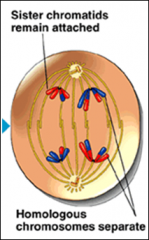
Meiosis
|
sexual reproduction- requires fertilized ( one sex cell from each parent joins together )
Division of a parent cell into four four daughters, cell called gametes. haploid - half a set of chromosome with different genetic information. |
|
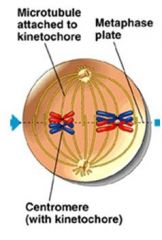
Meiosis 1
|
Homologous chromosomes are separated into two daughter cells
Follows stages similar to Mitosis |
|
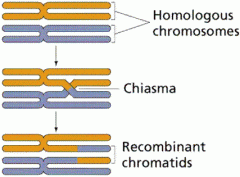
Prophase I
|
Chromosomes form and each chromosome pairs with its homologous chromosome; called a tetrad – four chromatids
In a tetrad, homologous chromosomes can exchange portions of their chromatids; called crossing-over Occurs at the chiasma Creates recombinant chromatids (“recombined”) Provides genetic variation – that’s how each one of us is very different from the other Sexual reproduction creates genetic variation |
|
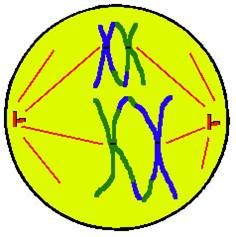
Metaphase I
|
Tetrads line up in the middle, equatorial plane, of the cell
|
|

Anaphase I
|
Homologous chromosomes separate and move away from each other to opposite poles of the cell
Each is genetically different from the original cell due to crossing-over |
|
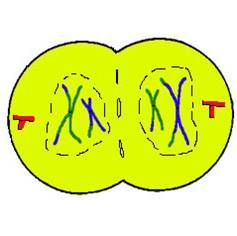
Telophase & Cytokinesis
|
Nuclear envelope forms
Cytokinesis occurs resulting in two daughter cells Daughter cells are NOT identical due to crossing-over in prophase I |
|
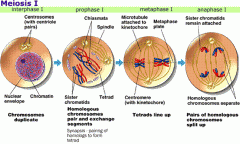
Meiosis I Overview
|
Nondisjunction can occur when homologous chromosomes do not separate during anaphase I
There is an uneven distribution of chromosome to the two daughter cells, which may result in one daughter cell not having any chromosomes at all At this stage, there is a higher risk of producing nonviable cells (not able to reproduce) during meiosis II Genetic mutations in meiosis CAN be passed to offsprings |

